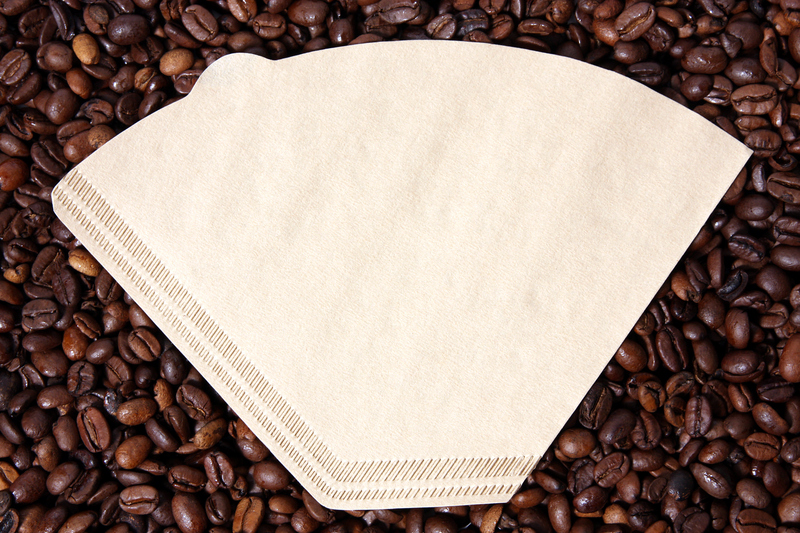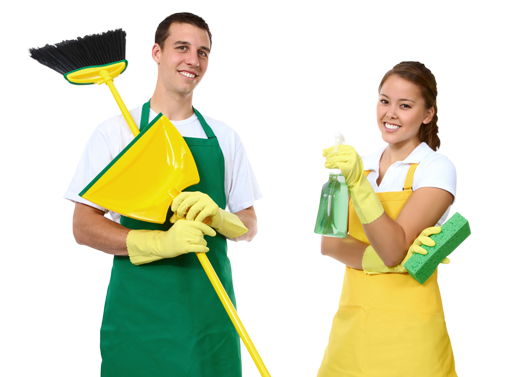Efficient Methods to Clean uPVC Window Frames
Posted on 06/06/2025
Efficient Methods to Clean uPVC Window Frames
uPVC window frames have become a staple in modern homes due to their durability, energy efficiency, and low-maintenance nature. However, even the hardest-wearing materials require routine care to keep them looking their best. Regular cleaning not only ensures that your uPVC windows stay visually appealing, but it also prolongs their lifespan and maintains optimum performance. In this article, we'll explore the most efficient methods to clean uPVC window frames, share expert tips, and highlight common mistakes to avoid. Whether your uPVC frames are newly installed or you're sprucing up older windows, you'll find practical, actionable advice to achieve sparkling results.

Why Properly Cleaning uPVC Window Frames is Essential
Unplasticized Polyvinyl Chloride (uPVC) is a robust, weather-resistant material favored for window frames, but environmental exposure can lead to dirt build-up, grime, stains, and even discoloration. Cleaning your uPVC window frames regularly offers a number of benefits:
- Enhances curb appeal by keeping windows white and pristine.
- Prevents build-up of pollutants, dust, and organic matter.
- Extends the life of hinges, seals, and frames by reducing wear.
- Reduces the risk of stubborn stains or permanent discolouration.
- Keeps mold and mildew at bay.
Let's break down the best practices and cleaning solutions for uPVC window frames to make sure your windows remain a shining asset to your home.
Preparation: What You'll Need to Clean uPVC Window Frames
Before diving into cleaning, it's crucial to gather all the necessary cleaning materials for uPVC window frames to ensure an efficient and hassle-free process.
Basic Cleaning Supplies
- Soft microfiber cloths or sponges
- Mild liquid dish soap
- Warm water
- A soft-bristle brush or old toothbrush (for crevices and corners)
- Non-abrasive spray bottle (for cleaning solutions)
- Duster or vacuum (for loose dirt and debris)
- Optional: White vinegar, baking soda, specialist uPVC cleaner, and non-scratch scraper for tough marks
Safety Precautions
- Avoid harsh chemicals and abrasive sponges that may damage or scratch the surface.
- Do not use bleach or solvent-based cleaners, as they can cause yellowing and degrade uPVC over time.
- Wear gloves if you have sensitive skin or are using any commercial products.
Step-by-Step: Efficient Cleaning Methods for uPVC Window Frames
There are several efficient methods to clean uPVC window frames depending on the level of soiling, age, and location (indoor or outdoor). Let's outline a step-by-step guide to ensure thorough results every time.
1. Dust and Remove Loose Dirt
- Start by dusting your uPVC window frames using a dry microfiber cloth or a vacuum cleaner with a soft brush attachment.
- Pay special attention to corners, hinges, and joins where debris can accumulate.
- This step prevents loose particles from becoming wet and smearing when you start washing.
2. Prepare a Mild Soapy Solution
- Mix a few drops of mild liquid dish soap in a bowl or bucket of warm (not hot) water.
- Avoid strong detergents or any cleaning agents containing ammonia, as these can diminish the gloss and finish of your uPVC.
3. Wash the Frames Gently
- Dampen a soft cloth or non-abrasive sponge with the soapy solution.
- Wipe down the uPVC window frames with long, gentle strokes.
- Use a soft-bristle brush or old toothbrush to tackle stubborn dirt in crevices and corners, such as weather seals or around handles.
4. Tackle Stains and Marks
- Persistent stains on uPVC may require slightly more effort. Try the following:
- For light marks, a mixture of baking soda and water can act as a gentle abrasive paste. Apply with a soft cloth, gently rub, and rinse off.
- For greasy or sticky patches, a diluted solution of white vinegar and water is effective. Spray, wait a few minutes, and wipe clean.
- Commercial uPVC frame cleaners are available; ensure they're approved for uPVC use and always follow manufacturer instructions.
- Never use steel wool or rough scrubbing pads, as these can scratch and permanently damage the surface.
5. Rinse and Dry Thoroughly
- Once all areas have been cleaned, wipe down the frames with a clean, damp cloth to remove any residue from soap or cleaning agents.
- Dry the uPVC window frames using a dry microfiber cloth to avoid water spots and streaks.
- Dry seals and joints carefully to prevent water ingress or mold growth.
Advanced Tips: Keeping Your uPVC Window Frames Looking Like New
Deep Cleaning Methods for Older or Yellowed uPVC Frames
Over time, especially on older frames, discoloration and deeper stains may develop. Here's how to address them:
- Specialist uPVC cream cleaners or restorers can often revive color and remove yellowing, but always test on an inconspicuous area first.
- Magic eraser pads can help with superficial marks but use them with a light touch.
- For ingrained dirt, apply a paste of baking soda and water, gently rub, and thoroughly rinse.
- For professional results on very old or extensively yellowed frames, consider hiring a uPVC restoration service.
How to Clean uPVC Window Sills and Inside Edges
- uPVC window sills can collect dust, pollen, and mildew. Use the same mild soapy solution, but take extra care to dry the area thoroughly after cleaning.
- For narrow edges or inside grooves, a cotton swab or soft toothbrush is ideal.
- Inspect for mold or mildew growth; apply a solution of equal parts water and vinegar, let sit, and wipe clean.
Prevention: Tips to Reduce Future Cleaning Effort
- Clean exterior uPVC frames at least twice annually, or more often in areas near busy roads or trees.
- Wipe up spills and stains immediately to prevent them from setting in.
- Avoid sticking tapes, decals, or labels directly on the frames, as adhesives may cause discolouration.
- Lubricate moving parts and hinges lightly after cleaning to maintain seamless window operation.
Common Mistakes to Avoid When Cleaning uPVC Window Frames
- Scrubbing with abrasive materials: Never use steel wool, rough scourers, or harsh brushes.
- Using solvent-based or highly alkaline cleaners: Bleach, acetone, and caustic products can cause irreparable damage.
- Skipping regular maintenance: Neglecting to clean uPVC frames leads to stubborn stains and more challenging upkeep.
- Allowing water to seep into seals: Always dry well to prevent mold or damage to window seals.
Recommended Products and DIY Solutions for Clean uPVC Frames
Best Commercial uPVC Cleaners
- Specialist uPVC creams and sprays (check local hardware stores or online marketplaces)
- Non-abrasive all-purpose household cleaners (ensure they are safe for plastics)
Effective Homemade uPVC Cleaning Solutions
- Mild dish soap and warm water for general cleaning
- Baking soda paste for stain removal (mix with water)
- White vinegar diluted with water for streak-free cleaning and mold prevention

Frequently Asked Questions About Cleaning uPVC Window Frames
How often should I clean my uPVC window frames?
For optimal appearance and performance, clean your uPVC frames at least twice a year. More frequent cleaning may be required if you live in an area prone to heavy pollution, rain, or near trees.
Can I use a pressure washer to clean uPVC windows?
Pressure washers are not recommended for cleaning uPVC window frames, as the force can damage seals or penetrate inside the frame, causing future problems.
What should I do if my uPVC window frames have turned yellow?
Try a specialist uPVC restorer or a baking soda paste. If staining persists, consult a professional restoration service. Avoid using bleach or harsh chemicals as they may worsen yellowing.
Is it safe to use vinegar on uPVC window frames?
Yes, diluted white vinegar is safe and effectively removes grease, mildew, and some stains. Always rinse and dry frames thoroughly after use.
Conclusion: Keep Your uPVC Window Frames Pristine
By following these efficient methods for cleaning uPVC window frames, you'll preserve their bright, attractive appearance and safeguard your home's investment for years to come. Remember to stick to mild cleaning agents, use soft tools, and avoid harsh chemicals. Establishing a regular cleaning routine not only makes each job easier but also extends the life and performance of your uPVC windows and doors. Whether you're deep cleaning after winter or giving your frames a quick freshen up before summer, these best practices will ensure long-lasting, spotless results.
Looking for more home maintenance tips? Bookmark this guide and explore our other articles on efficient cleaning and window care to keep your property in prime condition!
```



